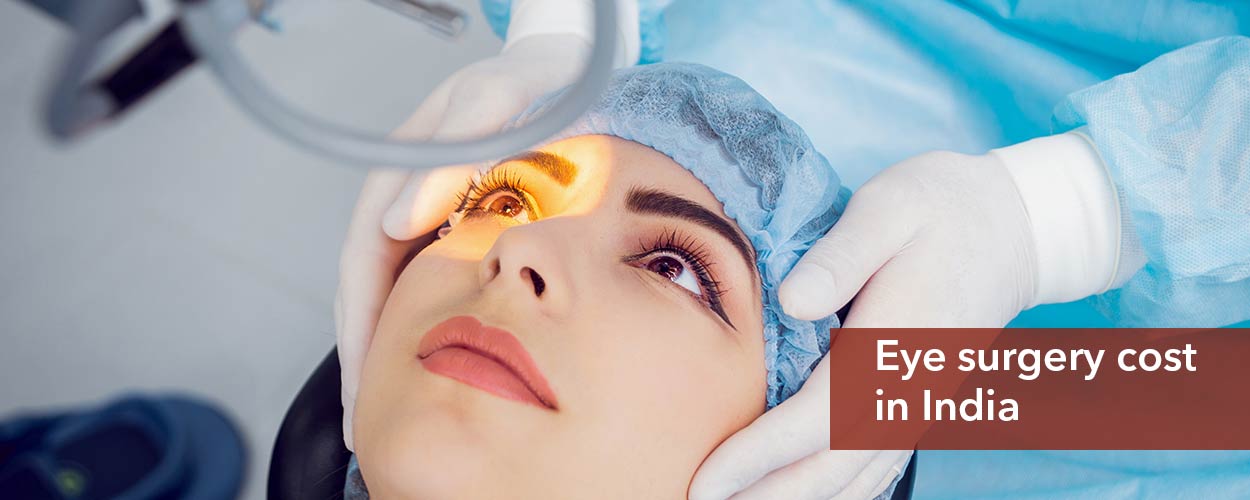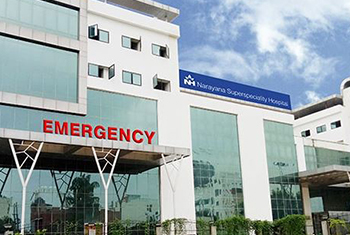Types of Eye Surgery
Corrective eye surgery:
The most common and popular type of eye surgery is corrective eye surgery and refractive eye surgery, which aims to improve the vision by eliminating refractive errors. Laser eye surgery is the most popular elective surgery for this. The two prevalent corrective eye surgery methods are PRK (Photorefractive keratectomy) and LASIK (laser-assisted in Situ Keratomileusis). These procedures can be used to correct refractive errors such as Hyperopia, Astigmatism and Myopia in people. Laser eye surgery is also used to eliminate the use of corrective lenses.
- Photorefractive keratectomy (PRK): It is recommended for people who have thin corneas, posing a problem in the creation of a flap.
- LASIK: This is the most popularly performed type of laser eye surgery. It is a high-precision technique for the removal of corneal tissue and reshapes it to modify its level of focus.
Refractive surgery is done to increase the eye’s focus by creating a clear circular dome in front of the eye. It may also involve reshaping the cornea.
Presbyopia Surgery: Presbyopia is a common condition that normally starts in people of the age group of 40-50. In this condition, the eye is unable to focus at all distances. It is generally noticed when the person starts finding the print blurred. The stiffening of the lens of the eye can potentially lead to the condition of Presbyopia or it might be connected with atrophy of the muscles that control the lens or its development. Presbyopia can be corrected by creating ‘monovision’ with the LASIK technique. This vision condition may also be treated using the conductive keratoplasty method.
Keratoplasty (Corneal Transplant) Surgeries
Keratoplasty or corneal transplant is a surgery in which the natural cornea of the patient is replaced with donor tissue. Different techniques can be used for this surgery, including:
- Penetrating keratoplasty
- Conductive keratoplasty
- Laser thermal keratoplasty
Also, there are different levels of corneal transplant:
Full-thickness corneal transplant: This involves the removal and replacement of the entire cornea. After the surgery, it may take a year or more to experience complete restoration of vision.
Partial-thickness corneal transplant: This is an option for patients who only have damaged middle and front corneal layers. The surgeon removes only these layers, leaves the endothelial layer intact.
Endothelial keratoplasty: It is a type of surgery that is considered when the endothelium layer of the cornea is damaged. In this procedure, the surgeon removes the damaged cells from a particular part known as Descemet’s membrane of the cornea. The doctor performs the operation through a small incision. After the damaged areas have been removed, new tissue is used to replace them. This allows the surgeon to leave the majority of the cornea untouched.
Corneal Crosslinking with Riboflavin
This is a treatment option for people diagnosed with a condition called Keratoconus.
Corneal Crosslinking is a non-surgical, non-invasive treatment method that is based on collagen crosslinking of the corneal tissue using Ultraviolet A (365 nm) and riboflavin (vitamin B 2), a photosensitizing agent. This method modifies the intrinsic biomechanical properties of the cornea and increases the strength of the membrane by almost 300%. The increased corneal strength has been shown to stop the progression of keratoconus.
A cataract is becoming a common eye condition in which the lens becomes cloudy, leading to vision problems. Cataract surgery is a highly successful and safe procedure. Surgical intervention is recommended when the person has significant vision loss that impacts their daily life. The surgery is considered after proper evaluation of the eye and check for other eye diseases. The procedure lasts about thirty minutes and is performed under mild sedation. The surgical procedure involves the placement of an artificial lens in place of the original to restore proper vision.
There are mainly three approaches the cataract surgery –
Extracapsular Cataract Surgery: It is performed when the lens is too opaque for other procedures. It involves sutures and has a longer recovery period.
Intracapsular Cataract Surgery: involves total removal of entire lens and surrounding capsule. It is done by creating a large incision, but this is a very rarely used method.
Phacoemulsification: This procedure is performed after putting the patient under local anesthesia. It is the most common type of cataract surgery. The surgery involves the use of ultrasonic vibrations to dissolve the hazy lens by inserting a probe.
Glaucoma Surgery or Trabeculectomy:
Glaucoma results in vision loss and increases intraocular pressure. The surgery is aimed at reducing the intraocular pressure in the eye. It can be performed multiple times as there is low risk. The surgery may also be combined with eye drops that help to lower eye pressure. The different types of trabeculoplasty surgery are –
- Traditional trabeculoplasty
- Argon laser trabeculoplasty
- Micropulse diode laser trabeculoplasty (MDLT)
- Selective laser trabeculoplasty
Conventional surgery approach: It involves creating a new drainage canal to allow the drainage of the intraocular fluid from the eye.
Laser Surgery: In this, a small opening is made with the help of a laser to allow fluid to drain from the eye. This method helps in increasing the drainage of the fluid of the eye.
Lid Repair Surgery
This surgery can be performed for functional as well as cosmetic reasons. Lid repair surgery can be used to correct the condition of droopy eyelids (ptosis). The procedures such as Fasanella-Servat, Muller’s muscle conjunctival resection (mild to moderate ptosis), Frontalis suspension (for severe congenital cases), and Blepharoplasty (cosmetic surgery for age-related ptosis) are available.
Keratotomy Procedures
Keratotomy is a procedure in which the cornea is cut to improve vision. There are mainly two types for this procedure:
Astigmatic keratotomy (commonly performed)
Radial keratotomy (rarely used)
Cancer that develops in the cells of the eye is referred to as eye cancer. There can be several tumors that develop in different parts of the eye. Primary cancer starts when the cells in the eye modify (mutate) and grow uncontrollably to form an abnormal mass of cells or tumors. The tumor might be cancerous or non-cancerous. Cancer that develops in the eyeball is known as Intraocular malignancy.
Types of Intraocular Cancer
Melanoma is the most common type of primary intraocular cancer in adults, while the most common type of intraocular cancer in adults is Uveal metastases. It spreads to the uvea from the other parts of the body (secondary cancer). Melanoma develops when the pigmented cells in the eye have uncontrollable growth (melanocytes). Uveal melanoma is also commonly known as intraocular melanoma.
The other types of cancers are –
- Retinoblastoma
- Intraocular Lymphoma
- Eyelid Carcinoma
- Conjunctival Melanoma
- Lacrimal Gland Tumor
- Hemangioma













